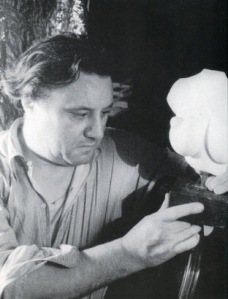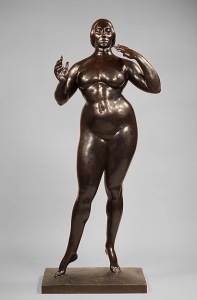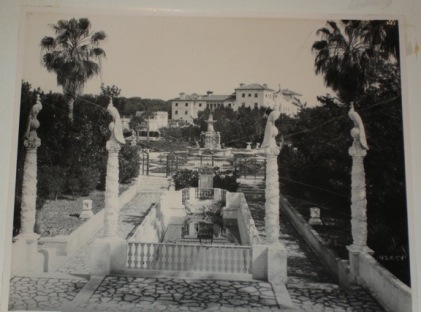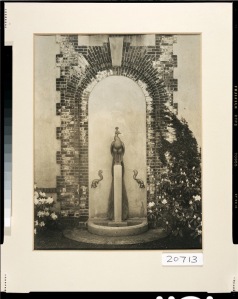If you have not already done so, I encourage you to make a point of spending some time with the beautiful peacocks that grace the terrace above our formal garden. The statues, cast in bronze with gilding, are the work of Gaston Lachaise (1882–1935). Lachaise’s works are exhibited in major museums, parks, and gardens around the world.

Gaston Lachaise (1882-1935) Peacocks (1920, 1928)
The peacocks are on loan to Bartow-Pell from the Lachaise Foundation as part of the NYC Department of Parks and Recreation’s “Art in the Parks” program (begun in 1967).
The mission of the Lachaise Foundation is to perpetuate the artistic legacy of Gaston Lachaise and to oversee a limited number of castings from his original models. Both peacocks on loan to us are second castings and no additional castings have been made since, meaning that they are the only examples other than the originals.
Gaston Lachaise was an Ecole des Beaux Arts-trained artist whose early career included an apprenticeship with the Art Nouveau designer René Lalique. At the age of 23 he left France for the U.S. where he would live for the remainder of his life, which was cut short by leukemia at age 53.
Lachaise’s oeuvre spans the tumultuous period at the turn of the last century when art and culture, propelled by the upheavals of the two world wars, sought to redefine intellectual and aesthetic ideals. Considered a pioneer of American Modernism, Lachaise was part of New York’s early 20th century art scene, along with friends and colleagues like Joseph Stella, John Marin, Georgia O’Keefe and Paul Manship. He and Manship worked together frequently on public projects including Rockefeller Center, where Lachaise produced a series of reliefs called Aspects of Mankind depicting the evolution of modern civilization.
Aspects of Mankind (1932-34)]
Much of Lachaise’s later work is typified by his larger-than-life female nudes such as Standing Woman, which were inspired by his wife, Isabel, who was his lifelong muse. However, Lachaise sculpted animals frequently—peacocks, seagulls, swans, and dolphins—always choosing peaceful, graceful animals. The long-tailed and short-tailed peacocks date from 1928 and 1920 respectively. The short-tailed peacock was commissioned by John Deering for his Florida estate, Vizcaya. And in an interesting coincidence, the long-tailed peacock was commissioned by Phillip Goodwin, who was an architect for Delano & Aldrich. Delano & Aldrich was the firm that designed the neo-classical garden here at Bartow-Pell Mansion Museum some five years earlier, ca. 1915.
Elevation 1912-1927
Lachaise had a productive relationship with architect William Welles Bosworth, who also worked with Delano & Aldrich. Lachaise provided decorative elements for several public buildings and private residences designed by Welles Bosworth (including the architect’s own home in Locust Valley, NY). In addition to the peacocks here at BPMM, you can see examples of Lachaise’s work in the greater New York area in places like the Metropolitan Museum of Art, Kykuit (the Rockefeller estate in Pocantico Hills), the AT&T building on Broadway in lower Manhattan, and, of course, Rockefeller Center.
Vizcaya (1920)
The peacocks will be with us until May 2016, when Paula Hornbostel, Director of the Lachaise Foundation, will give a talk entitled: “From Figures to Fountains, Women to Peacocks: Garden Sculpture of Gaston Lachaise 1920-1935”. Please join us for her lecture and come and see our visiting peacocks; they are beautiful now and may be even more so with a cloak of snow.
Goodwin Fountain (1928)







Pingback: Index | mansion musings